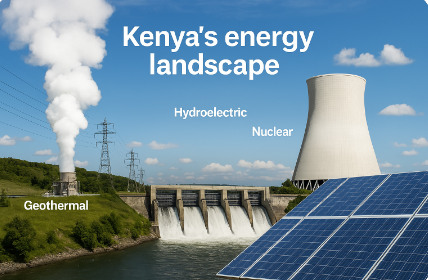

Kenya's energy landscape is at a critical juncture. The country’s installed electricity capacity currently stands at about 3,245 MW.
However, the surge in demand is alarming. Just this year, we witnessed a record peak demand of 2,316 MW on February 12, following closely on the heels of a 2,043 MW peak demand in January.
This rapid increase underscores a troubling reality of our energy reserves are dwindling. To put it simply, the country’s “reserve”, which is the difference between the generation capacity available and the highest recorded peak demand is shrinking fast.
Excluding solar, which is not reliable at night, Kenya is operating with a dangerously thin margin of approximately 480 MW.
This situation demands immediate and substantial investment in electricity generation to bolster our spinning reserves and secure Kenya’s energy future, vital for our economic and social development.
The challenge is compounded by the increasing integration of variable renewable energy sources like wind and solar.
While these are crucial for a sustainable future, their inherent unpredictability poses operational challenges.
As the US National Renewable Energy Laboratory points out, these technologies require significant adjustments in how our power system is planned and operated.
For example, variable renewable generation, such as wind and solar power technologies, exhibits distinct characteristics compared to traditional generation sources that have historically fulfilled electricity demand.
The inherent variability and uncertainty of variable generation technologies contribute to the existing system’s unpredictability, potentially leading to significant operational impacts.
Variability refers to the anticipated fluctuations in the balance between generation and demand. This includes factors such as the shifting load throughout the day and the changing availability of wind power resources.
In essence, relying solely on intermittent sources like wind and solar makes balancing supply and demand a precarious task.
To ensure stability, we must prioritise investment in reliable baseload technologies geothermal, large hydroelectric and, importantly, nuclear energy.
While coal presents another option, our commitment to a clean energy transition necessitates a focus on sustainable alternatives.
Kenya is uniquely positioned to leverage baseload energy. We possess vast geothermal potential of 10,000 MW along the Rift Valley, untapped hydro resources and the promise of nuclear power.
Baseload plants, which operate continuously, are essential for providing the constant power supply our homes and industries need.
The country’s energy planning tool, the Least Cost Power Development Plan 2022-2041, projects a significant increase in generation capacity, from 2,919 MW in 2021 to 8,870 MW by 2041.
To achieve this, we must embrace a diversified energy mix that includes all viable baseload technologies. To meet the growing demand, the country must explore innovative approaches and make practical decisions about the deployment of energy generation technologies.
Kenya has made commendable strides in geothermal development, which has mitigated power rationing due to the impact of climate-induced fluctuations in rainfall on our hydro-power generation.
However, even geothermal requires support. This is where nuclear energy becomes crucial.
The government’s plan to deliver Kenya’s first nuclear-generated megawatt by 2032 is a step in the right direction. This diversified approach will not only meet our growing energy needs but also position Kenya as an attractive investment destination, thanks to competitive energy pricing.
Investing in baseload energy is not just about keeping the lights on but also make country attractive to industries and investors as a destination of choice due to the competitiveness in energy pricing.
It is about securing the country’s economic future and ensuring Kenya’s energy independence. It is an investment in Kenya’s stability and growth.
The writer is an energy communications specialist
in the public sector












